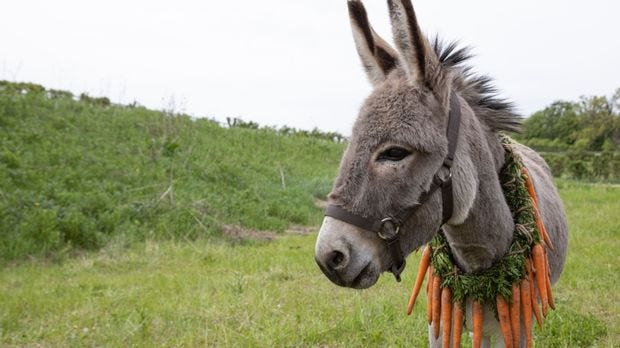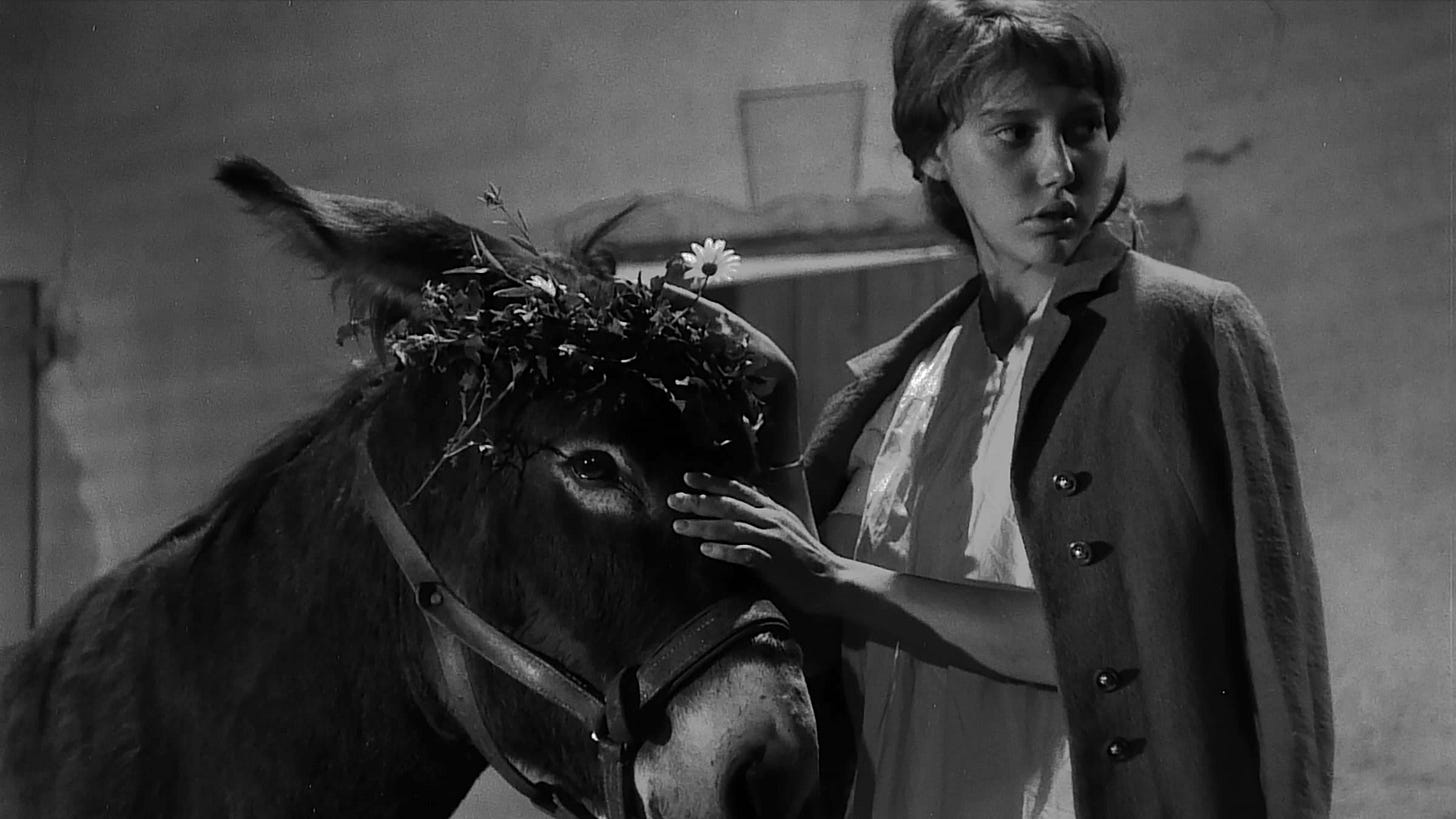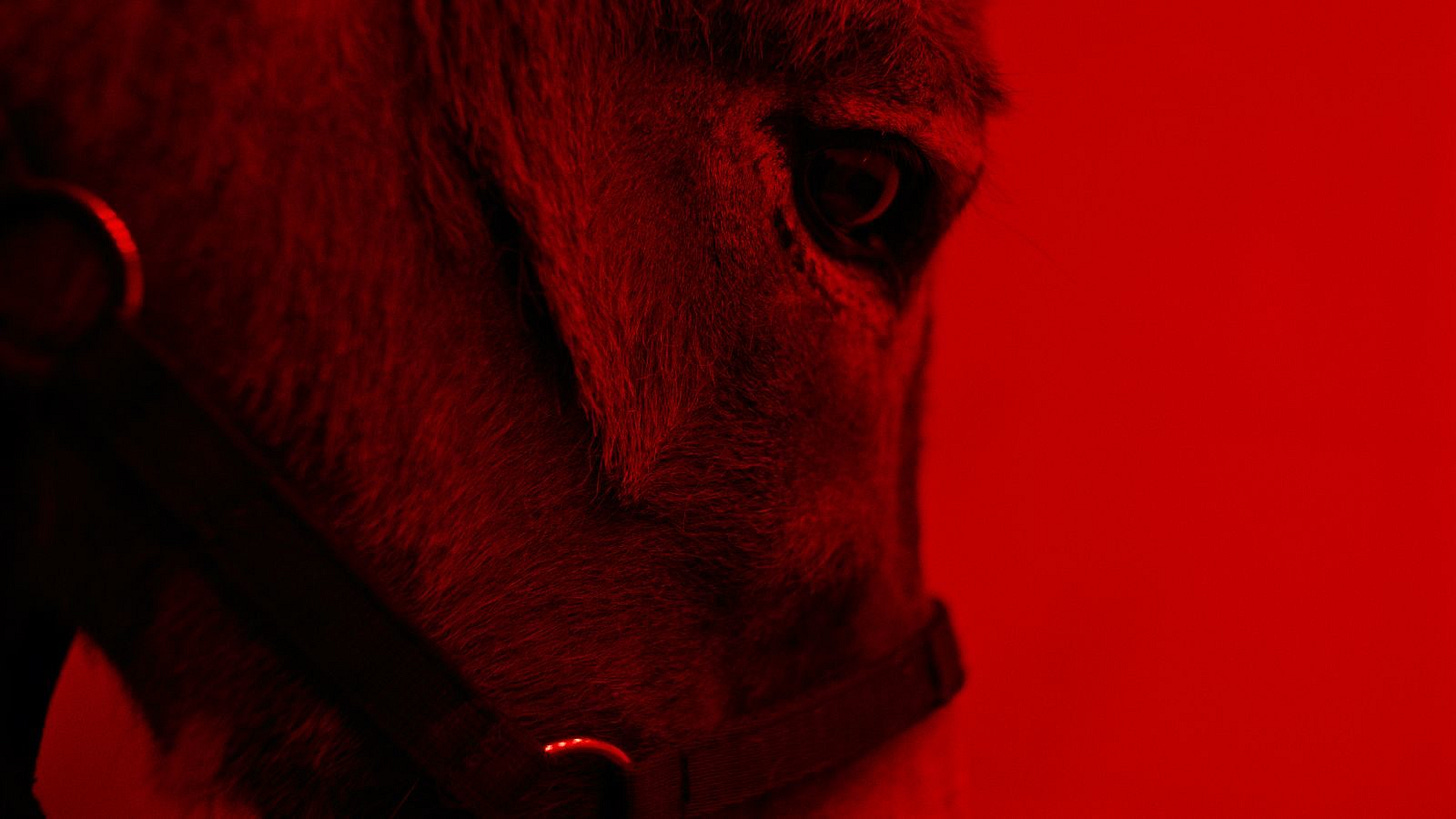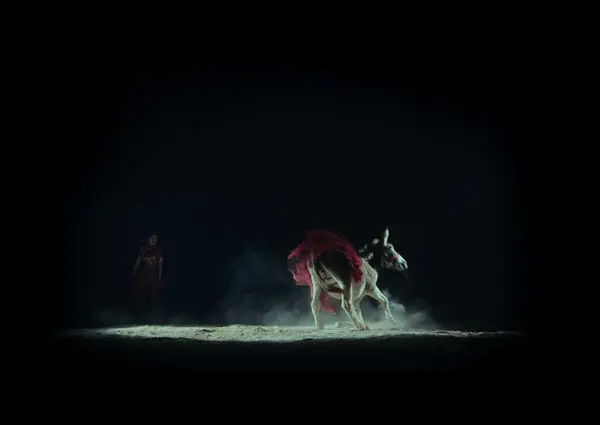There seems to be an unspoken belief among some filmmakers and audiences alike that stories centering non-human subjects are — or should be — reserved for the realm of animation. And, while I by no means seek to downplay animation’s merit, I feel as if the ubiquity of animal and other non-human protagonists in animation has inevitably earned these stories the prescriptive designations of “low-brow,” or “for children” (as if these are inherently bad things).
In all fairness, regardless of the intended audience, it is far easier to get away with a non-human protagonist in animation due to the medium’s capacity to stylize and anthropomorphize its animal or otherwise inanimate subjects in such a way that allows the viewer to identify with them. Perhaps this is partly why Robert Bresson’s 1966 film Au Hasard Balthazar is lauded as a triumph in the tradition of empathetic cinema and commonly cited as a counterpoint to this notion.
After all, it is surely a feat to get audiences to emotionally identify with a live donkey — which lacks the uniquely human ability to emote or any self-aware understanding of the cinematic medium — beyond detached pity or compassionate observation. Still, Bresson’s formal approach never quite grants the viewer full access to Balthazar the donkey’s subjectivity due to the filmmaker’s penchant for narrative and stylistic minimalism. Despite its titular non-human subject, the film is first and foremost an examination of human nature. Yet, Bresson’s seminal experiment evidently invited future filmmakers to offer up their own renditions of this mammalian odyssey. Polish filmmaker Jerzy Skolimowski — who had already made his feature debut by the time Au Hasard Balthazar was released — is the most recent director to reimagine this story, with EO (2022).
Now, I admit that I watched Balthazar for the first time in preparation for this film and I am still somewhat unfamiliar with most of Skolimowski’s filmography, so my understanding of the extent to which EO is meant to be a remake or an homage is cursory at best. Still, I’d hesitate to call EO a remake despite Bresson’s palpable influence.
While his film borrows Bresson’s episodic narrative concept of a donkey’s journey from owner to owner, Skolimowski tells a much different story. The titular donkey this time around feels like a full-fledged character, rather than a passive surrogate for a more abstract study of suffering and human nature. This is not to say that this element isn’t there — in fact, the film boasts a string of distinct vignettes featuring deeply textured human characters made all the more real through Skolimowski’s humanist directorial approach.
Ironically enough, this humanism is delivered primarily through EO, the film’s central non-human subject. Skolimowski leans into EO’s subjectivity, employing inventive manipulations of sound and color to signal the donkey’s emotional responses to a wide range of stimuli. Often, we are left only with the isolated sound of EO’s breath, or close-ups on his eyes — a simple yet powerful sensorial approach that elevates our understanding of EO beyond the immediate or literal and into the metaphysical. A triptych of digressive, 2001-stargate-esque dream sequences throughout the film complicates EO’s psychology — and the entire film’s subtext — in a way that feels both grounded and expressionistic.
One such sequence, which bookends a heart-wrenching scene in which EO is beaten by a frustrated mob of soccer fans, features saturated footage of a robot dog futilely navigating its way through the grass. An initially disorienting digression from the violence that precedes it, this sequence asks the viewer to consider the tangled web of human/non-human relations that account for such random — and systemic — acts of cruelty. Some might contemplate the ecological price we pay for our solipsism and technological excesses, while others might draw a metaphorical comparison between EO’s violent objectification and the automated simulacra that seem to provoke it. Whatever the case, Skolimowski’s expressionist sensibilities injects EO’s subjectivity with a sort of deliberate reflexivity that sees formal experimentation as a means to a thematic end.
Even when we aren't granted direct access to EO’s subjectivity through shimmering POV shots or dream sequences, Skolimowski manages to show the viewer the world as seen by EO through breathtaking compositions bordering on painterly tableau. One shot in particular, in which EO watches a team of majestic horses gallop in an open field through the window of a moving trailer, floored me — not only because of the assumed difficulty of composing such a shot, but also because of how Skolimowski manages to infuse the frame with both a sense of sheer wonder and profound sadness. Maybe the donkey in this particular scene was just a natural-born actor (it is worth mentioning that Skolimowski manages to get believable reaction shots out of his donkeys — NYT film critic Manohla Dargis went as far as suggesting that Tako, one of six donkeys who portray EO, deserved a nomination for the Best Supporting Actor Oscar), but I genuinely felt a sense of longing that few other films — and the human actors in them — have been able to evoke in me. Scenes such as this, I must note, are yet another example of how EO, and Balthazar before it, accomplish what I’ve otherwise only seen accomplished in animation. Equal parts confined and limited as any domesticated animal and sprawling and beautiful as if seeing the sky for the first time, EO’s cinematography makes the 1.50:1 frame feel like the entire world.
I would be remiss not to draw the inevitable comparison between EO and Balthazar’s endings, although I hesitate in an effort to avoid comparing apples to oranges. Yes, there is a profound tragedy at the heart of both films which comes to fruition in their final minutes. Popular readings of both films will likely designate their respective donkeys as the embodiments of innocence and suffering, lights to be extinguished by the cruel world of men. I do not seek to disavow this notion; in fact, these readings are probably right. I do, however, think there is an important distinction to draw between both films’ ethos.
Through his deliberate centering of EO’s subjectivity amidst a whirlwind of human drama, Skolimowski allows the donkey a degree of agency absent in Bresson’s film. There are moments in which EO, whether successfully or unsuccessfully, defies the whims of his human owners. I’ll leave the debates over the moral implications and questions of free-will to the philosophers and animal rights activists, but I feel as if Skolimowski’s blurring of the lines between animalistic instinct and genuine sympathetic emotion lends the film a layer of complexity and tragedy unlike many films I’ve seen.
Furthermore, EO’s agency similarly complicated my reading of the human characters, many of whom do not actually seek to harm EO. This is not a story of man’s inherent superiority or inclination for violence. There are certainly damning depictions of man’s capacity for cruelty, but they are woven into a complex lattice of meditations on wonder, longing, beauty, suffering, companionship, and solitude — the very fabric of living, no matter one’s species.
Thus, while Skolimowski certainly revels in the formal tradition of empathetic cinema, he sets out to achieve different ends. Just as sober as it is existential, EO strikes an elusive thematic balance not even its beloved predecessor struck. Whether standing alone or in dialogue with Balthazar, EO’s words ring true. It’s a worthy companion piece to a revered classic, an achievement in live-action storytelling, and an elegant fable for the current moment.
EO is nominated for Best International Feature at the 2023 Academy Awards.







